The Fall of Rome, Myths vs. Reality

The Fall of Rome: Myths vs. Reality
Few events in history loom as large as the fall of Rome. For centuries, writers and scholars have debated why one of the world’s greatest empires collapsed. Was it decadence and luxury, barbarian invasions, or simply the passage of time? The story is filled with myths, exaggerations, and popular legends that often overshadow the complex reality. The fall of Rome was not a single event but a long process, marked by transformation as much as decline. By separating myth from fact, we can better understand how and why Rome’s western empire came to an end, and why its legacy still shapes our world today.
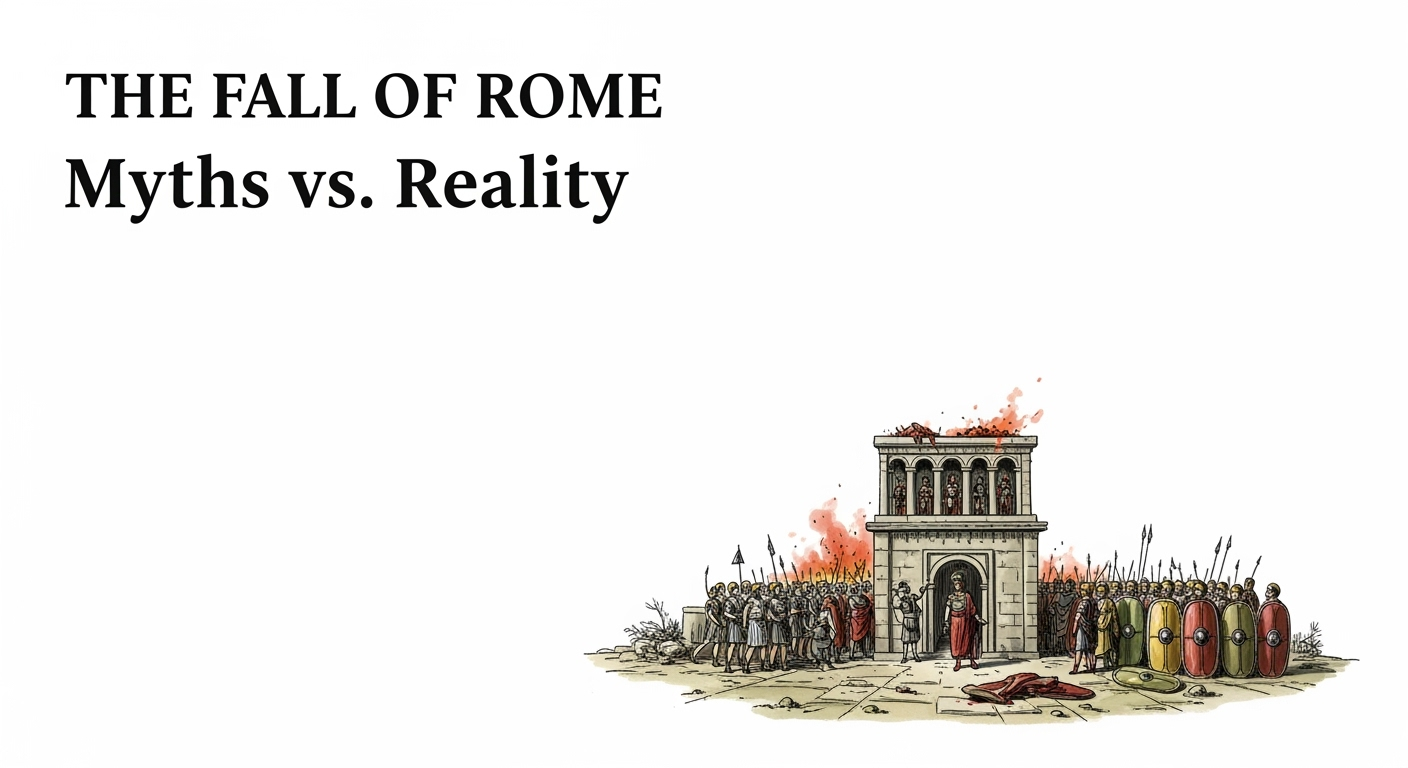
Myth 1: Rome Fell in a Single Day
The idea that Rome suddenly collapsed, as if the empire toppled overnight, is one of the most persistent myths. Schoolbook versions often highlight 476 CE, when the last emperor of the Western Roman Empire, Romulus Augustulus, was deposed by the Germanic leader Odoacer.
In reality, the fall of Rome was centuries in the making. The empire had already split into eastern and western halves in the late 3rd century. The eastern empire, based in Constantinople, continued for nearly a thousand years as the Byzantine Empire. The western empire suffered repeated invasions, economic troubles, and political instability long before 476. By the time Romulus Augustulus was removed, the empire’s authority had been eroding for generations. Rather than a sudden collapse, it was more of a slow unraveling.
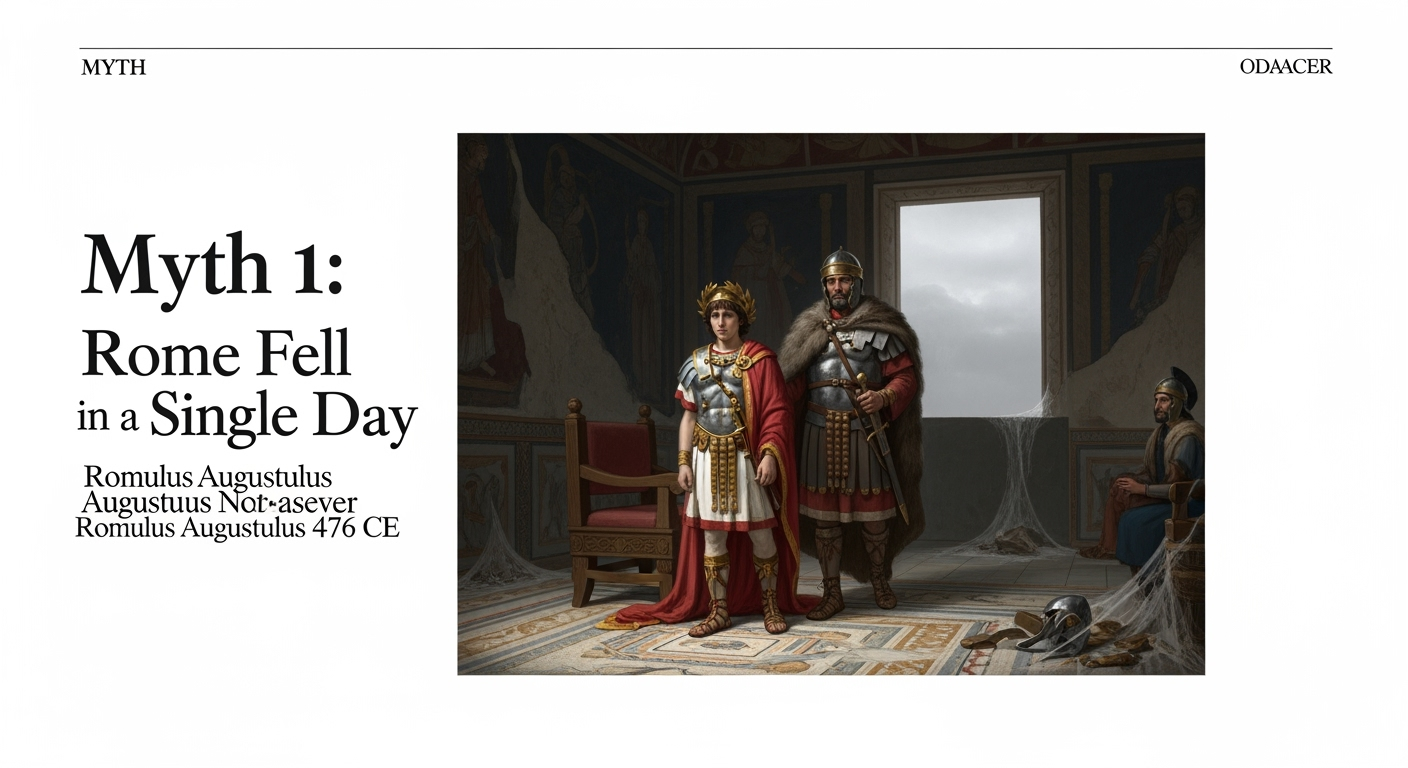
Myth 2: Barbarian Invasions Alone Caused the Fall
When most people picture the fall of Rome, they imagine hordes of barbarian warriors storming the gates. It is true that invasions by groups such as the Visigoths, Vandals, and Huns played a major role. In 410, the Visigoth king Alaric sacked Rome, an event that shocked the ancient world. In 455, the Vandals plundered the city again. These invasions weakened the empire’s hold on its territories and humiliated Roman pride.
Yet blaming only the barbarians oversimplifies the story. Many of these so-called barbarians were not foreign strangers but groups who had long lived on Rome’s borders, sometimes even inside its territory as allies or mercenaries. Rome often recruited them into its armies, granting land and citizenship in exchange for service. The empire’s inability to integrate these groups peacefully reflected deeper political and social challenges. The invasions were symptoms of Rome’s weakness, not the sole cause of its fall.
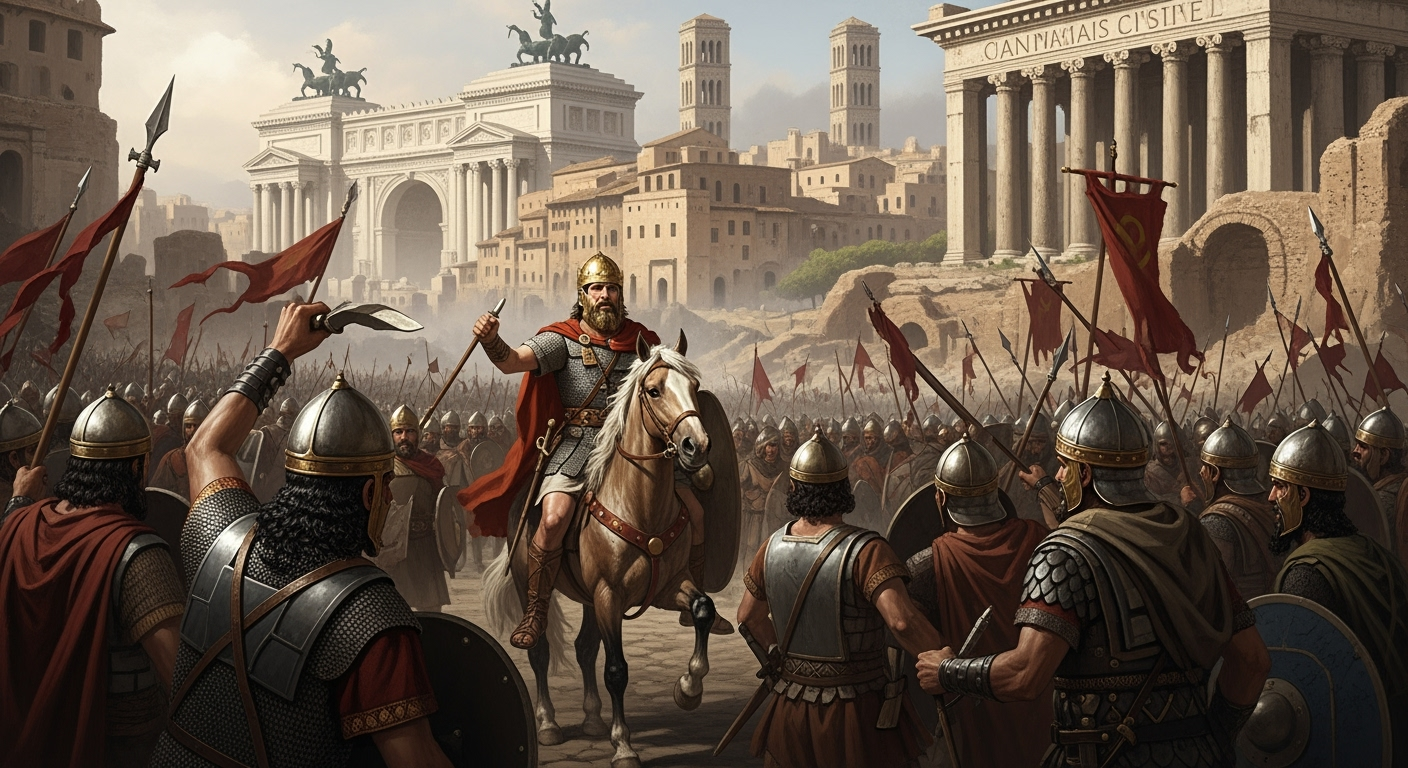
Myth 3: Rome Fell Because of Moral Decay
Writers since ancient times have blamed Rome’s decline on moral weakness. The argument goes that Romans grew lazy, decadent, and corrupt, abandoning the hard virtues that once built their empire. Historians such as Edward Gibbon popularized this idea in the 18th century, arguing that the rise of Christianity also softened Roman values and contributed to the empire’s collapse.
While corruption and decadence certainly existed, this explanation oversimplifies the situation. Archaeological evidence shows that Roman society continued to function, trade persisted, and many communities thrived even as imperial power declined. Christianity, far from weakening the empire, actually helped provide stability in some areas, offering institutions and leadership when secular authority faltered. The notion of moral decay is more of a cultural critique than a historical fact.
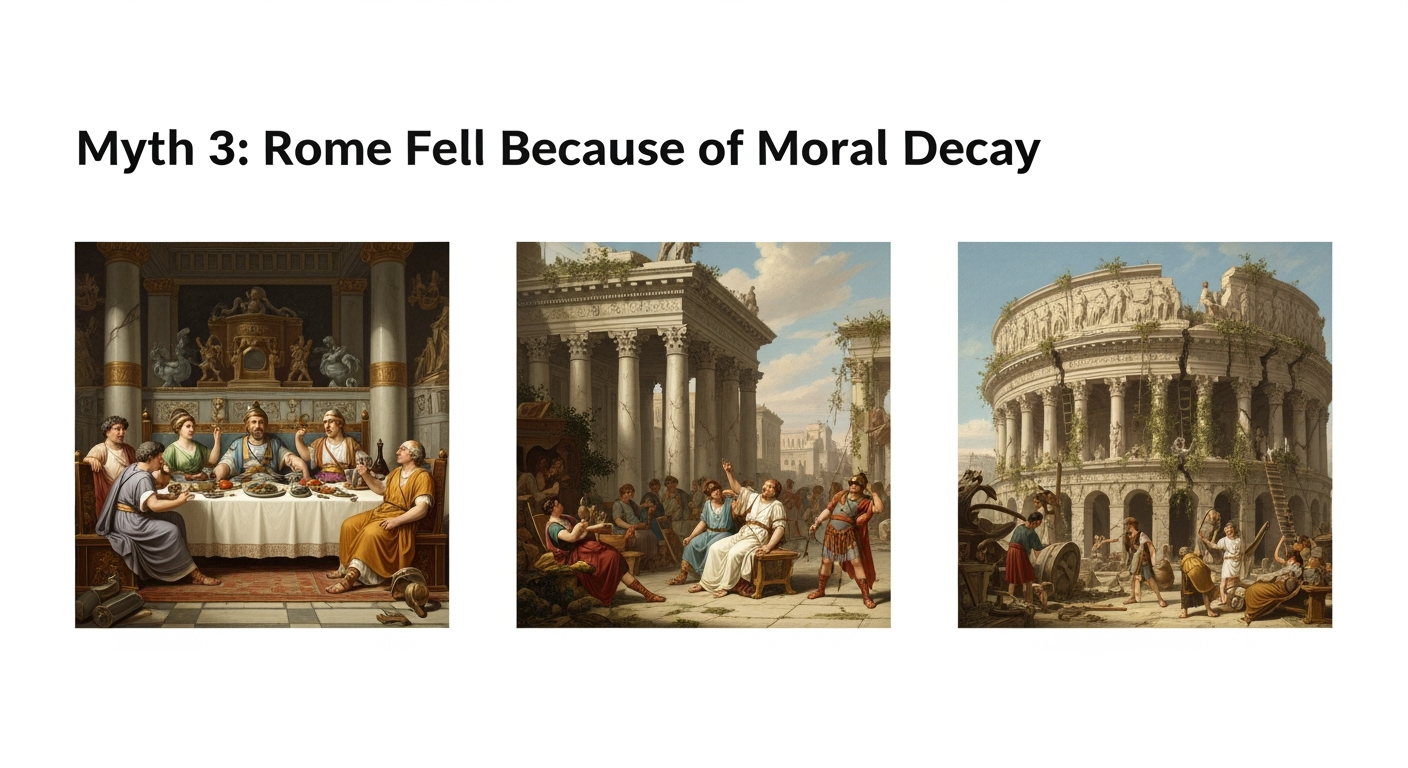
Myth 4: Rome ’ s Economy Was Always Strong
Another misconception is that Rome’s fall was a shock to a strong and stable system. In truth, the empire faced deep economic troubles long before 476. Heavy taxation burdened peasants, inflation devalued currency, and reliance on slave labor created stagnation. Agricultural productivity declined in some regions, while wealthy elites hoarded land and avoided taxes.
The empire’s size also strained its economy. Maintaining vast armies, roads, and infrastructure required enormous resources. Trade networks were disrupted by invasions and piracy, while local economies became less integrated into the imperial system. By the 4th and 5th centuries, economic decline was already limiting Rome’s ability to defend itself and support its population.
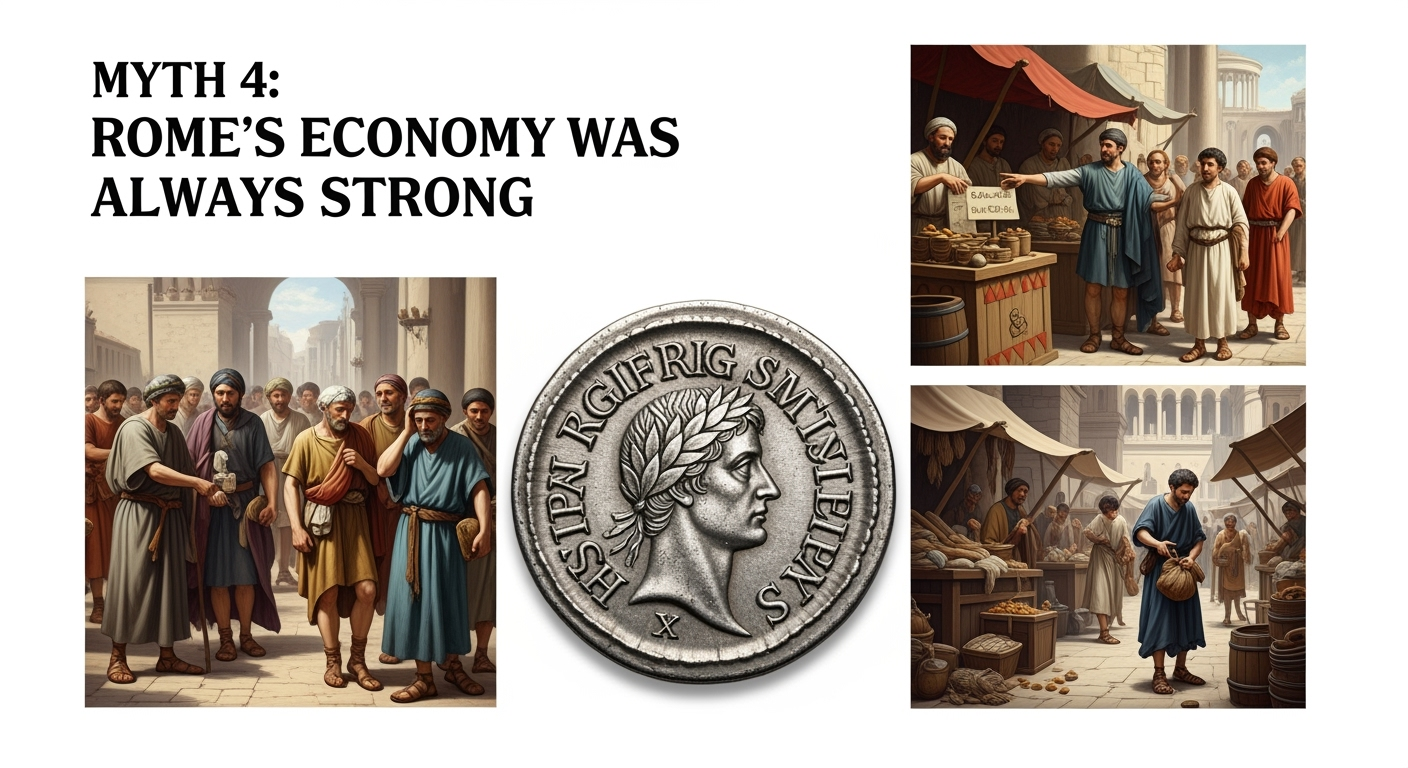
Myth 5: The Eastern Empire Fell Alongside the West
Another myth is that when the Western Roman Empire collapsed, Rome as a whole disappeared. In reality, the Eastern Roman Empire, often called the Byzantine Empire, continued to thrive for centuries. Centered in Constantinople, it preserved Roman law, culture, and traditions. It withstood invasions, adapted to new challenges, and became a powerful Christian empire.
The Byzantines even considered themselves Romans, calling their empire the “Roman Empire” long after the west had fallen. Their survival shows that the fall of Rome was not inevitable but the result of specific circumstances in the west, such as political instability and economic fragility.
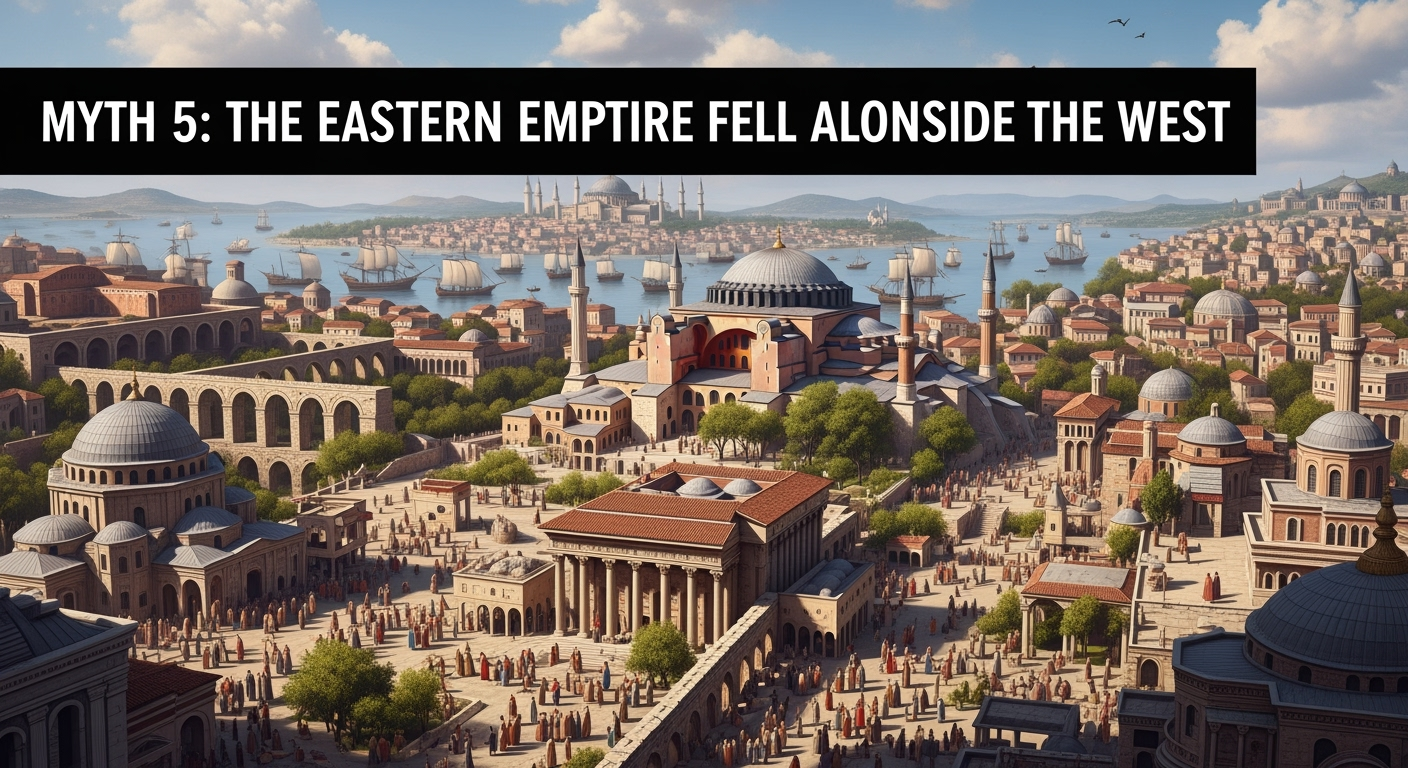
Myth 6: Rome Fell Entirely Into Darkness
Popular imagination often depicts the fall of Rome as the beginning of the “Dark Ages,” a period of chaos and ignorance. While the collapse of central authority did lead to upheaval, it was not the end of civilization. Many Roman traditions endured, from Latin language and law to roads and architecture. Local rulers, the Christian Church, and successor kingdoms preserved much of Roman culture.
Far from being entirely dark, the early medieval period saw innovation and adaptation. Germanic kingdoms blended Roman traditions with their own, laying the foundations for modern Europe. The idea of the Dark Ages owes more to Renaissance writers who looked back with disdain than to historical reality.
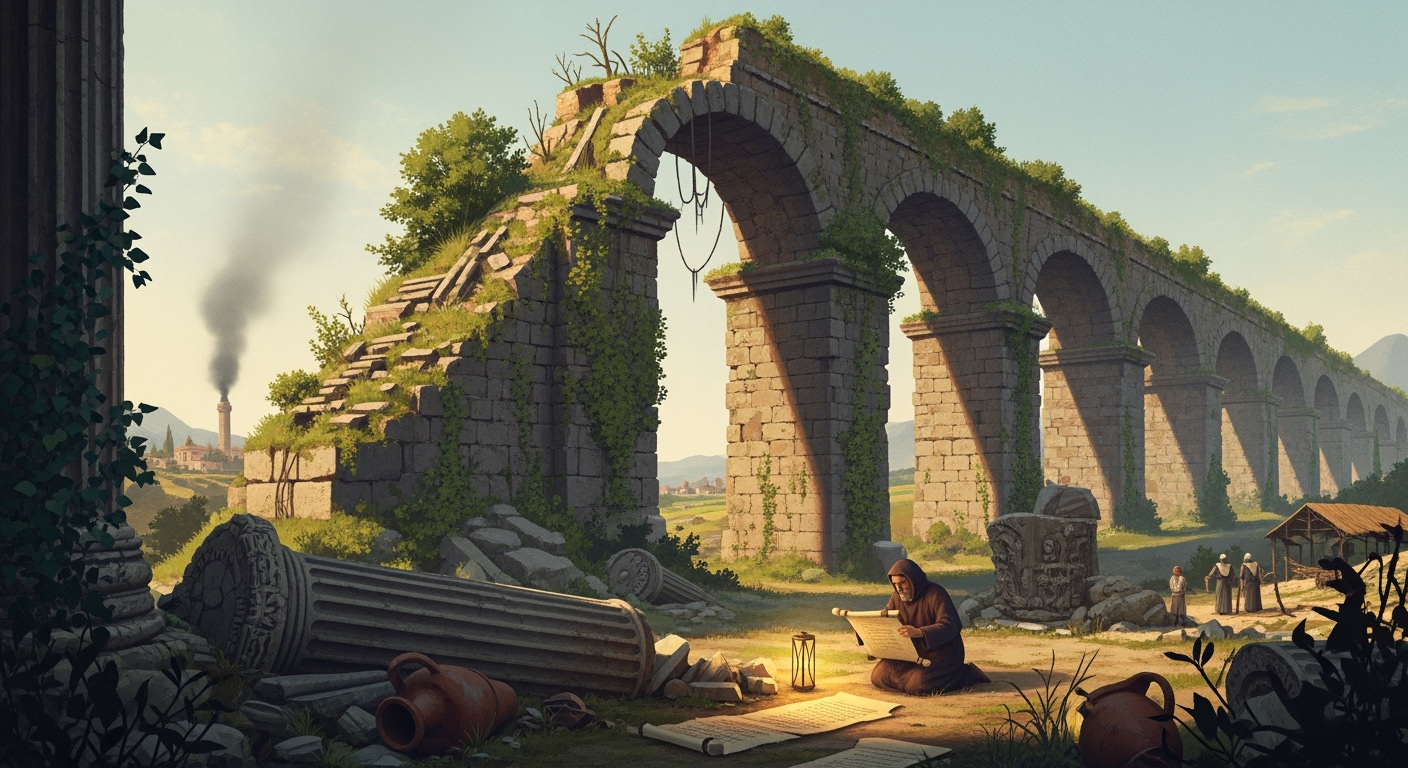
The Real Causes: A Combination of Factors
The fall of Rome cannot be reduced to a single cause. It was the result of a combination of internal and external pressures that built over centuries. Political instability weakened leadership, as emperors rose and fell with alarming speed. Civil wars drained resources and distracted from external threats.
Economic troubles eroded the empire’s foundations, while environmental changes may have reduced agricultural output. Military reliance on barbarian groups created instability, as once-loyal allies turned into rivals. And while invasions accelerated the decline, they did so by exploiting an empire already weakened from within.
In short, Rome fell not because of one dramatic blow but because it could no longer sustain the weight of its own complexity.
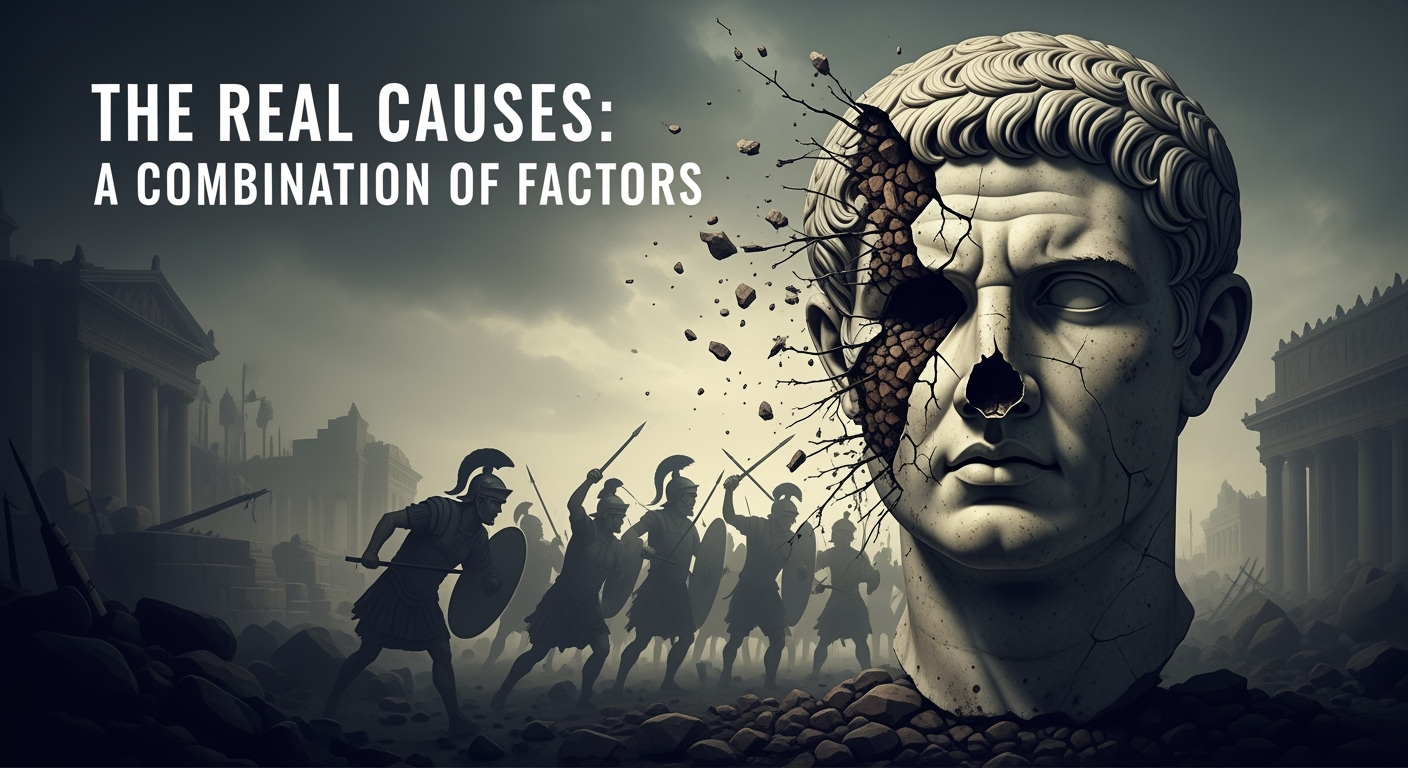
The Legacy of Rome
Although the Western Roman Empire collapsed, Rome’s influence did not vanish. Its laws, languages, and institutions lived on. Latin became the foundation of Romance languages such as French, Spanish, and Italian. Roman engineering and architecture inspired later builders. The idea of Rome as an eternal model of empire shaped medieval rulers, the Renaissance, and even modern governments.
The Eastern Empire carried Roman traditions forward, while the Catholic Church preserved knowledge and authority in the west. Even the barbarian kingdoms that replaced Rome often adopted Roman customs, titles, and legal systems. The concept of Rome as a unifying symbol endured long after the empire itself was gone.
The fall of Rome has fascinated historians, poets, and politicians for centuries. Myths of sudden collapse, barbarian hordes, moral decline, and cultural darkness have colored the story, but the reality is far more complex. Rome’s decline was gradual, shaped by political turmoil, economic strain, military challenges, and shifting cultural landscapes.
Rather than disappearing, Rome transformed. Its fall marked not the end of civilization but the beginning of new ones. The legacy of Rome lives on in languages, laws, cities, and even the way we think about power and history. The empire may have fallen, but Rome never truly disappeared.
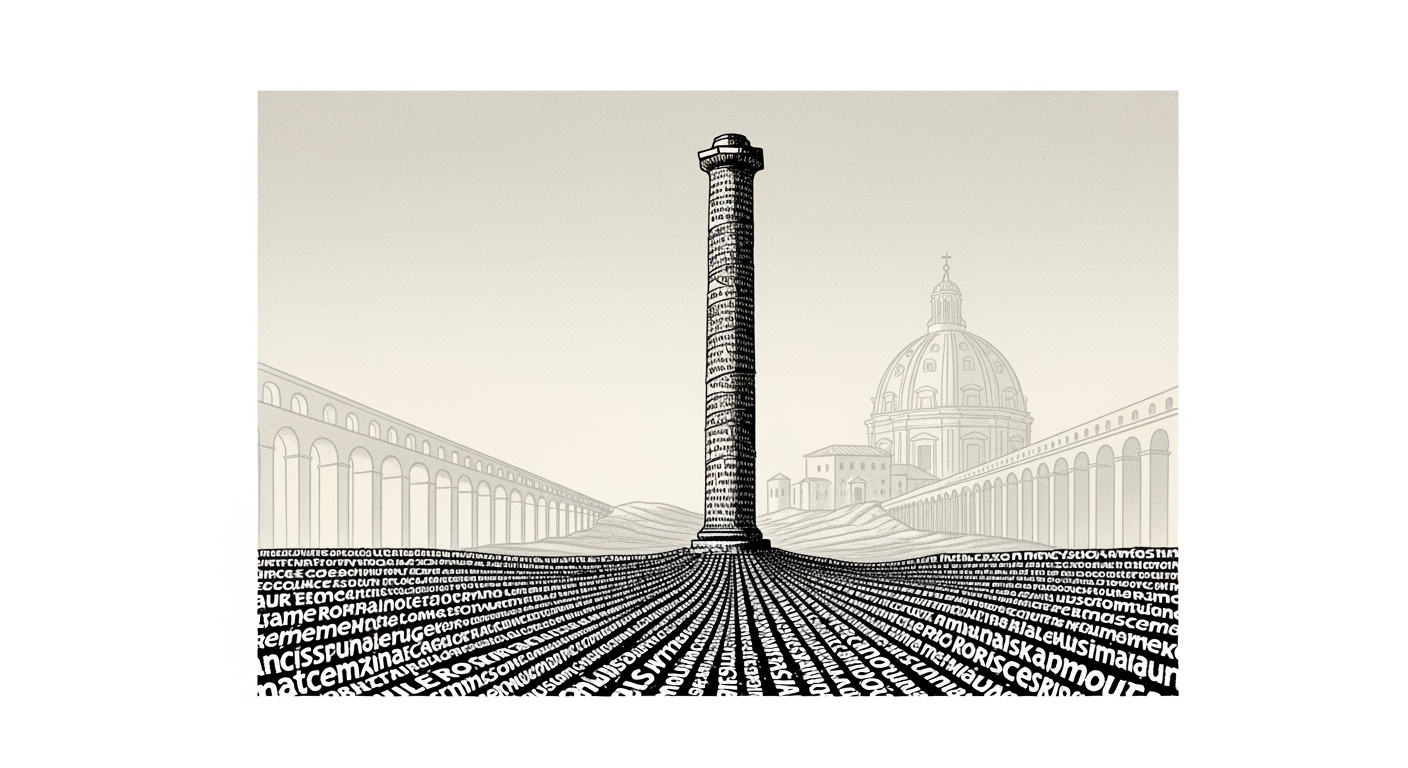
Disclaimer
This article is for educational and informational purposes only. While HistoryReveal.com strives for accuracy, historical interpretation may vary, and readers are encouraged to consult additional sources for deeper study.